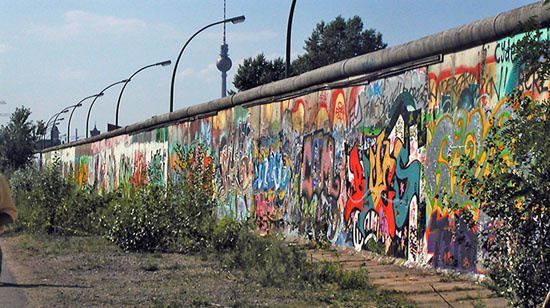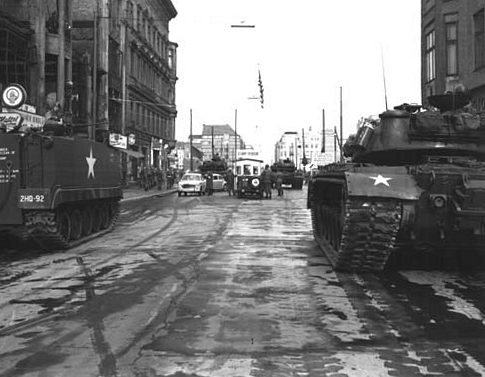Fresh into his administration, young president Kennedy was forced into action when he was notified of a clandestine operation planned by President Eisenhower to overthrow the dictatorship in Cuba. This invasion, now known as the “Bay of Pigs” fiasco, consisted of over 1,400 Cuban Exiles, trained by the CIA in the United States, in a desperate attempt to overthrow an unsavory tyrant, Fidel Castro.
The initial plan for the operation consisted of several air assaults and deception flights by the American Air Force against several Cuban airfields and military hotspots. Among the bombed targets were the airfield at San Antonio de los Banos and the Antonio Maceo International Airport at Santiago De Cuba. Shortly after the air raids, the principal invasion was supposed to commence. On the 17th of April, 1961, two CIA agents headed a force of four transport ships, laden with Cuban exiles, into the Bay of Pigs. This invasion did not go as planned, however, when the Cuban militia discovered the invasion force and alerted the rest of the Army. After several days of brutal fighting, over 200 of the Cuban exiles were killed and about 1,201 were captured. These casualties compromised the majority of the invasion force. The injuries done to the Cuban army, on the other hand, were much more extensive; between 4,000 and 5,000 militants and armed civilians were killed, missing, or wounded. This crisis was humiliating both politically and physically to the White House, especially to young President Kennedy. However, he chose to accept responsibility for his wrongdoings and this candor essentially saved him from a major public relations nightmare. In fact, he remarked, "The more I screw up, they more the American People love me."
The Berlin Wall:

The months after World War II had left the people of Germany devastated. Their economy was broken, their government strictly controlled by the Allies, and their capital was split in four. The four sections of Berlin were controlled by the Russians, Americans, the British, and the French. To make steps towards peace, the U.S., France, and Great Britain decided to unify their respective "zones" into one area they called West Berlin. The Russian zone therefore became known as "East Berlin". While they were supposed to be equal, in both money and power, conditions in East Berlin could not have been more different than those in its counterpart. An exceedingly high number of refugees fled from East to West Berlin as Russia, in need of more resources to fund its own reconstruction, stripped East Berlin of everything valuable and sent it back to the Motherland. Talks about unifying Germany were stonewalled by the Russian Premier Nikita Kruschev and the American President Kennedy.
In a bold move, Kruschev ordered his armed forces stationed in Berlin to shut down all border crossings between East and West Berlin and to not allow any refugees without express consent from the Russian government to pass.
"The presence in Berlin of an open and essentially uncontrolled border between the socialist and capitalist worlds unwittingly prompts the population to make a comparison between both parts of the city, which unfortunately, does not always turn out in favor of the Democratic [East] Berlin." - Soviet East German ambassador Mikhail PervukhinThe above statement was given by the Russians as the premier reason as to the lock
 down. Several days later, in October 1961, Soviet and American tanks converged on a German border crossing checkpoint known as "Checkpoint Charlie". The crisis began when West German border officials disputed the East German officials' right to inspect the papers of an American diplomat crossing over into East Germany. While aggression was high, the standoff ended peacefully on October 28,1961.
down. Several days later, in October 1961, Soviet and American tanks converged on a German border crossing checkpoint known as "Checkpoint Charlie". The crisis began when West German border officials disputed the East German officials' right to inspect the papers of an American diplomat crossing over into East Germany. While aggression was high, the standoff ended peacefully on October 28,1961.Nevertheless, the Berlin Wall was increasingly fortified. It went from a simple barbed wire fence to an enormous monstrosity of concrete and brick, constantly guarded by East German border control officials, armed with automatic rifles. However, people did try and escape. It has been rumored that there were over 5,000 Escape attempts, each growing increasingly more elaborate than the previous one. A particularly famous escape attempt consisted of a modified sports car driving under a metal bar placed across the road to prevent people speeding. The drivers simply lay flat and kept on driving as the metal bar took off the windshield and the roof of the car. Up to four people could escape in such a fashion.
The Berlin Wall was not torn down until after a particularly poignant speech by President Reagan at the Brandenburg Gate in Berlin. President Reagan commented:
"We welcome change and openness; for we believe that freedom and security go together, that the advance of human liberty can only strengthen the cause of world peace. There is one sign the Soviets can make that would be unmistakable, that would advance dramatically the cause of freedom and peace. General Secretary Gorbachev, if you seek peace, if you seek prosperity for the Soviet Union and Eastern Europe, if you seek liberalization, come here to this gate. Mr. Gorbachev, open this gate. Mr. Gorbachev, tear down this wall!" - President Reagan
-- Alex Doundakov
I really the pictures and the quotes you included into your blog. It makes your posting at lot more interesting.
ReplyDeleteIt´s very detailed, and I like the quotes.
ReplyDeleteReally, really nice summary!
ReplyDeleteThank you for the summary. It is very detailed.
ReplyDelete